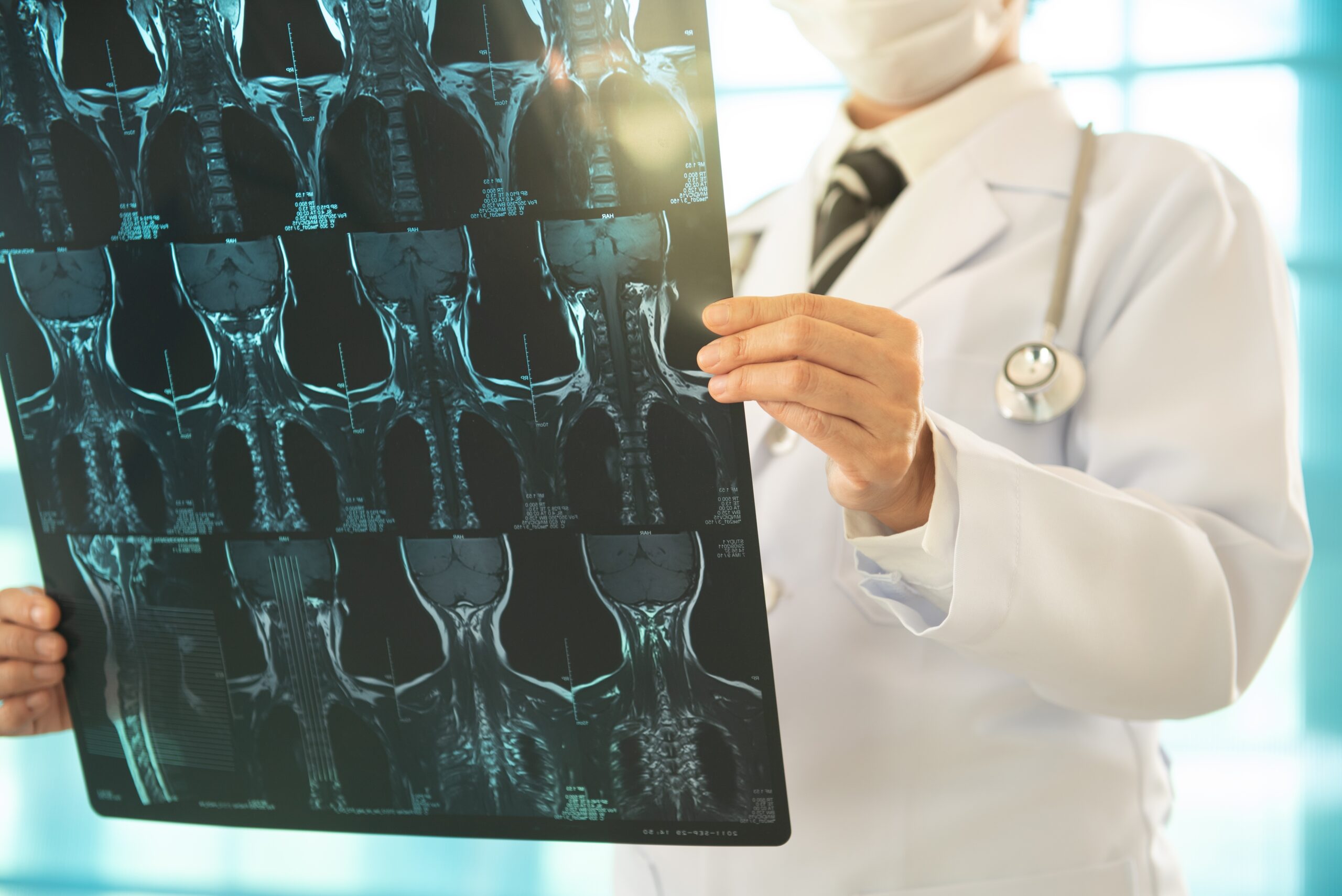
Cervical Disc Fusion
How Does Cervical Disc Fusion Work: Everything You Need to Know
Are you or someone you know about to undergo a cervical disc fusion procedure? Not sure what to expect? That’s okay. That’s why we’re here. And that’s why we’ve prepared this article just for you.
At Maxim Spine, we believe wholeheartedly in being transparent. After all, you’re in control. Not only that, but you deserve to feel comfortable. We feel the best way to achieve this is to be informed. Today, that means tackling the subject of spinal disc fusions.
More commonly referred to as “Spinal Fusions,” (We’ll use the terms interchangeably) cervical disc fusions aim to achieve one goal: Provide stability to your spine by fusing certain affected vertebrae. This eliminates motion in that area and, in turn, reduces pain. But there’s more to a fusion than that. The entire procedure can be broken down into ten basic steps:
- Preparation
- Anesthesia
- Incision
- Disc Removal
- Bone Graft Preparation
- Implantation
- Fixation
- Closure
- Recovery and Rehabilitation
- And Healing and Fusion
As you can see, a lot goes into these procedures. So, let’s get into what cervical disc fusion is, its pros and cons, and what you can expect throughout the process.
What it is and Where it Came From
As we mentioned earlier, spinal fusions are surgical procedures aimed at stabilizing your spine by joining two or more vertebrae together. These surgeries are performed to alleviate pain, address spinal instability, or correct potential deformities in your spine.
While spinal fusions aren’t necessarily new—The first successful one dates to the late 1800s—relatively new developments have greatly advanced them in recent decades. And according to an article published by the National Center for Biotechnology Information, “Patient self-reported success ranged from 85% to 95%.” Now, it’s just a matter of who can do it best and who will make the next great achievement.
And how it Works
And all this sort of begs the question, “How does cervical disc fusion actually work?” We’ve talked about the ten basic steps and the origins, but how does it all come together? The basic idea behind spinal fusion involves creating a solid bridge or connection between two or more of your vertebrae. We achieve this by adhering to and improving upon these five principles:
- Material for Fusion: Surgeons insert bone grafts or synthetic materials between the vertebrae that require fusion. These materials serve as a framework for new bone growth.
- Natural Healing Process: Your body’s natural healing mechanisms stimulate the growth of new bone tissue over time. This osteogenesis leads to the fusion of the vertebrae.
- Role of Bone Graft: The bone graft material acts almost as a scaffold. It encourages the growth of new bone tissue between the vertebrae by giving it something to latch onto.
- Supportive Implants: In some cases, surgeons might utilize metal implants like screws, rods, or plates. These implants offer immediate stability and support to your spine.
- And Stability Provision: The metal implants hold your vertebrae in place while the fusion solidifies, ensuring your spine remains stable during the healing period.
Relatively straightforward, right? Ultimately, the goal of spinal fusion is to eliminate movement between your vertebrae, reduce pain caused by motion or instability, and promote the formation of a single, stable spinal structure. This procedure limits mobility at the fused segment while redistributing stress and strain to your adjacent spinal segments, aiming to restore spinal function and alleviate discomfort or neurological symptoms.
The Pros and Cons of a Cervical Disc Fusion
For those who need it, they offer a range of potential benefits. For some, it’s a last resort and for others a saving grace. The inherent qualities of this procedure ultimately lead to:
- Improved Stability: Fusions stabilize your spine, reducing excessive movement between vertebrae, which can alleviate pain and prevent further damage.
- Pain Relief: Many experience reduced pain or relief from symptoms associated with conditions like disc degeneration, spinal instability, or fractures.
- Correction of Deformities: Fusion can correct spinal deformities, such as scoliosis or kyphosis. This dramatic correction improves alignment and function.
- Reduced Risk of Further Damage: By stabilizing your spine, fusion surgery can potentially lower the risk of future complications or neurological problems.
- Enhanced Quality of Life: For some, spinal fusion can lead to an improved quality of life by reducing pain and allowing greater mobility and functionality.
Unfortunately, there are also potential downsides to receiving cervical disc fusion. They’re not prevalent, and with each advancement in the field the probability of them occurring shrinks further. However, they’re worth considering:
- Limitation of Motion: Fusion restricts movement in the fused segment, potentially affecting flexibility and range of motion in your spine.
- Adjacent Segment Issues: The potential increase of stress on adjacent vertebrae can accelerate degeneration and require further surgery in those areas.
- Non-Guaranteed Pain Relief: While it often reduces pain, spinal fusion doesn’t guarantee complete relief. Some individuals may continue to experience discomfort.
- Potential Complications: As with any surgery, spinal fusion carries risks such as infection, blood clots, nerve damage, or issues related to anesthesia.
- Long Recovery Period: Recovery from spinal fusion can be lengthy and may involve limitations on activities or physical rehabilitation, impacting daily life for an extended period.
Some Things to Keep in Mind
It’s crucial to discuss the potential benefits and risks of cervical disc fusion with your surgeon. Weigh the individual circumstances and the specific condition being treated before deciding on this procedure. Try asking yourself these questions:
- Have I Exhausted Conservative Treatments? Reflect on whether you’ve explored non-surgical treatments (Physical therapy, medications, injections) and whether you’ve maximized their benefits. Understanding all conservative options is crucial before considering surgery.
- What Are My Expectations and Goals? Clarify personal expectations regarding pain relief, mobility improvement, and overall quality of life after surgery. Setting realistic goals and understanding potential limitations is essential for managing expectations.
- What Are the Risks and Potential Complications? Educate yourself about the potential risks and complications associated with spinal fusion surgery. Consider factors such as infection, nerve damage, adjacent segment issues, and the possibility of needing further surgeries.
- Is the Diagnosis Clear and Surgery Justified? Ensure the diagnosis is accurate and the proposed surgery is indeed the most appropriate treatment option for your condition. Seek multiple opinions and understand the necessity and potential benefits.
- Am I Committed to Post-Surgery Rehabilitation? Assess your commitment to the post-surgery rehabilitation process. Understand the importance of adhering to rehabilitation guidelines, including physical therapy, activity modifications, and lifestyle adjustments.
Know these questions are meant to encourage you to thoroughly evaluate your readiness, expectations, and understanding of the potential risks and benefits associated with cervical disc fusion. It’s essential to have comprehensive discussions with your surgeon to make an informed decision about pursuing this surgical option.
Want to Talk to a Surgeon Now?
If you already know this is a procedure you need, you still have a lot to think about. If you’re unsure whether this is a procedure you need, then there’s even more for you to work through. Regardless of where you stand, we’re here for you.
Need a second opinion? Don’t know what to do next? Give us a call.
At Maxim Spine, we understand your concerns surrounding limitations in spinal motion, possible stress on adjacent vertebrae, and the extended recovery period. That’s why our approach is centered on personalized care and comprehensive support from start to finish. With us, you’ll have a trusted partner by your side, addressing your concerns, setting realistic expectations, and mitigating risks while maximizing the potential benefits.










